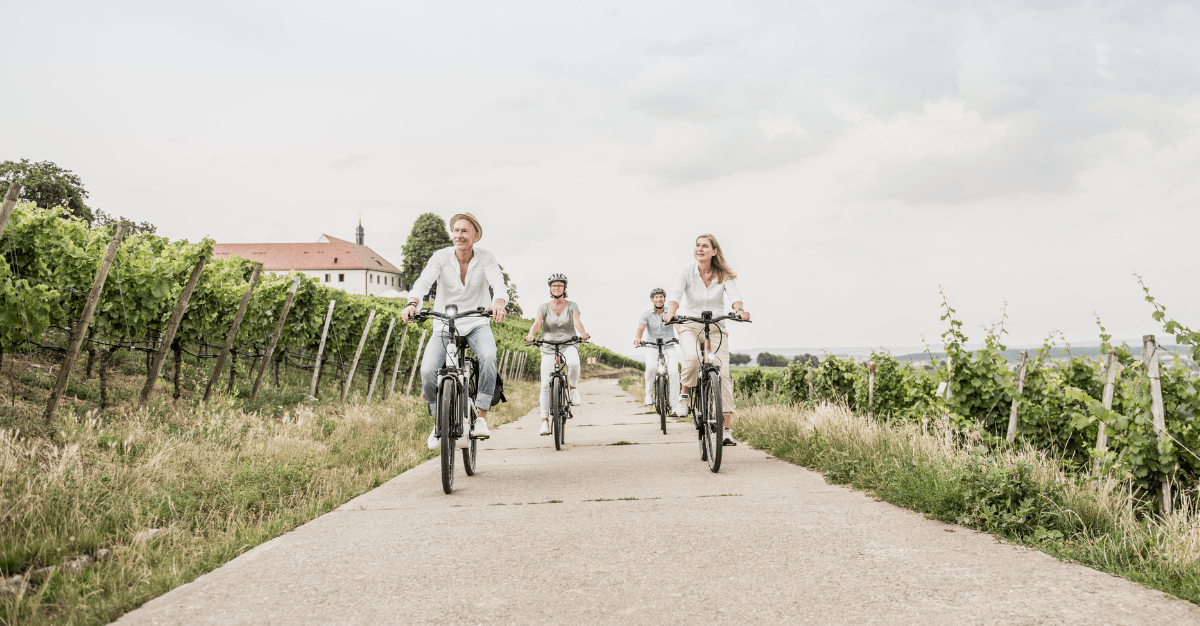The new Isnart report with Legambiente, "Travelling with the bike 2023", has been released, which photographs an absolutely positive and growing reality.
Bike trips are no longer dedicated to a niche but appear to be an increasingly important phenomenon in the tourism sector.
Evidence of this is the increase, more than double, in the number of cyclists which went from around 4 million in 2019 to more than 9 million.
These are tourists both Italians and foreigners who choose Italy for their two-wheeled holiday, generating an economic impact estimated at over 1 billion euros in the various host destinations.
Then there are also tourists who choose to use the bike for part of their holiday, still generating important numbers: it is estimated that there were almost 24 million tourists attributable to this category, for an expenditure in the area of almost 3 billion euros.
Regardless of whether they can be traced back to the first or second category, more than 33 million visitors were recorded, for an economic impact of over 4 billion for 2022.
“The considerable increase in pure cycle tourists – reported the president of Isnart Roberto Di Vincenzo – it demonstrates how the maturity of the sector has grown because this type of cycle tourist is the one who requires specific services for the world of cycling. Those who cycle for a walk do not have a very strong demand for bike stations or cycle workshops. The pure tourist, on the other hand, does and is the one who buys bikes, renews them, who is attentive to the market and who directs it deeply".
But who are these cycle tourists?
According to the report, the pure cycle tourist has an average age between 28 and 57 years (in 71% of cases) to which is added a minority share of people between 58 and 72 years (17.3%), characterized by a greater ability of spending compared to the younger group.
One in three cycle tourists travels as a couple, one in five travels alone or with friends. For accommodation, bike hotels (28%) are preferred, followed by farmhouses (11%) and campsites (7%) equipped for cycling holidays. Foreign cycle tourists tend to spend more than Italians, not only (understandably) on travel costs (there is talk of a difference of 143 euros) but also on accommodation: on average 15 euros more per day per person.
As regards the busiest areas, the Veneto, The Trentino Alto Adige and the Tuscany they remain the regions that attract the most cycle tourists, in fact they alone attracted 47% of the cycle tourist flows in 2022, but this phenomenon is taking hold throughout the country.
In fact, between 2019 and 2022, the share of cycle tourists who choose the Southern Italy it went from 7% to 17.4% and Central Italy is also growing, going from 10.9% to 15.8%.
For Southern Italy, cycle tourism represents an important opportunity for an extension of seasonality, to counteract the phenomenon of overtourism and an important driver of potential tourist development of the internal areas.
A further rapidly expanding segment is the high-end cycle tourism: a niche of cycle tourists with high spending capacity who is creating an offer characterized by personalized services and high added value.
This is a tourist who comes from the English-speaking world, travels in pairs or groups and has an average age between 50 and 55, with a high social profile and curious to learn about local territories, traditions, culture and food and wine, especially in less beaten by mass tourism.
A is expected further market growth in 2023 by 9 out of 10 specialized operators who then saw their turnover grow in the last three years.
The sector, therefore, has enormous growth potential but it is necessary to provide rapid and concrete responses, especially in terms of infrastructure.
The report suggested beating a lot on the presence of secondary roads with low traffic intensity, abandoned by motorized traffic, a heritage of which Italy is certainly rich.
“L’Italy – explained Stefano Venneri, head of Tourism and Innovation at Legambiente – it is the only country in Europe that can boast a connection network made up of small arteries between centers of high tourist attraction and which have the best of the landscape, historical, naturalistic and food and wine heritage, an original, typical Italian cycle tourism offer, capable of bridging the gap with those central European countries that have been able to count for years on a solid network of dedicated cycle paths. It is therefore welcome to invest in the tourist cycle path system of national interest, but relying only on that would take too long compared to the speed of growth of the sector".
Bringing these unused infrastructures back to life means improving rural connectivity, regenerating territories, bringing life back to distant areas and stimulating local economies.
These infrastructures can be used with limited investments in times and costs and can essentially be summarized as: signage, specific services from bike hotels, rental and cycle workshops.
Of great importance is also the realization of charging stations of ebikes, an increasingly important means of transport that has opened up this type of travel to everyone, even to less trained people.
The Ancma data then confirmed the positive trend of the e-bike sector: if the bike market recorded a -10% of pieces sold, the ebike market jumped to +14%.
As the Report also writes, “An opportunity that is certainly important and not to be missed, also in terms of infrastructural adaptation of the country, starting with the availability of a network of charging stations, is offered by the Pnrr which, in the context of several missions, has allocated considerable financial resources to investments that can be traced back more or less directly to cycle tourism".

